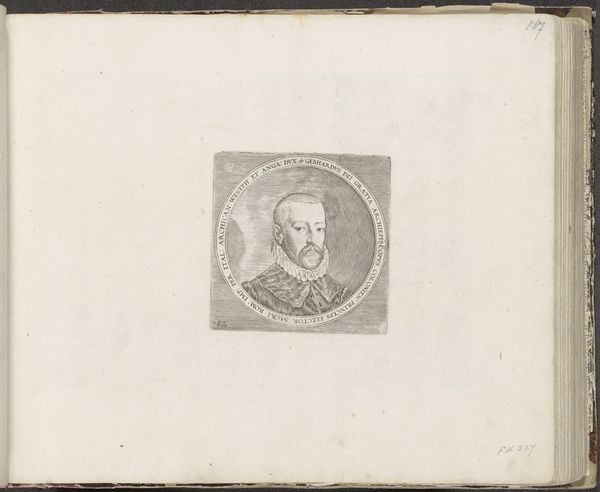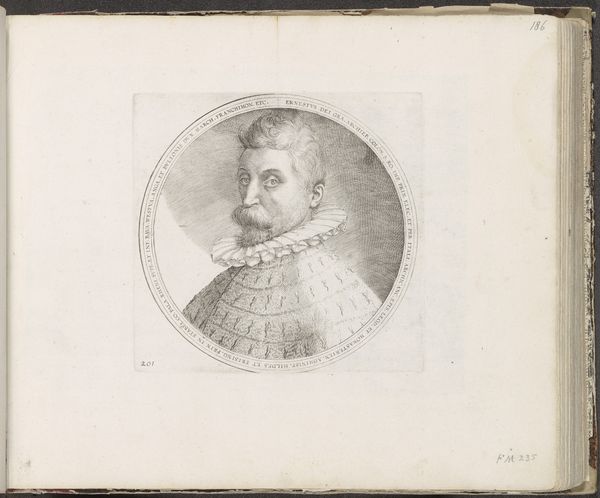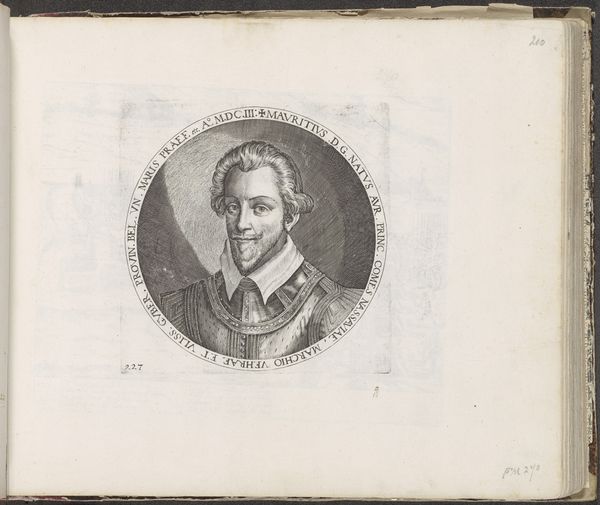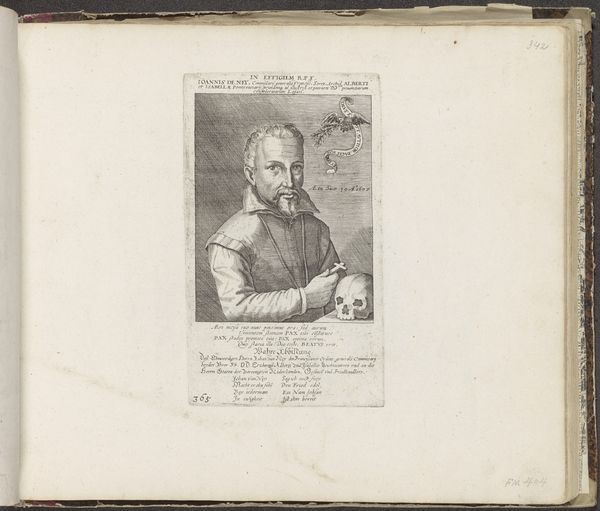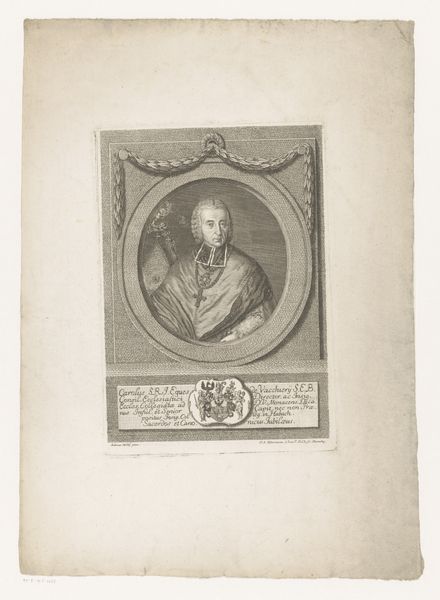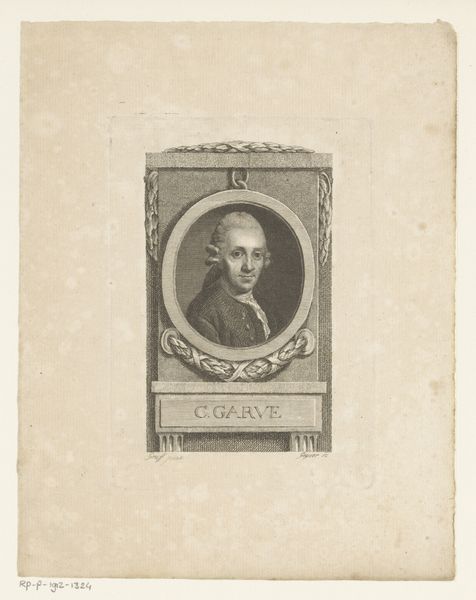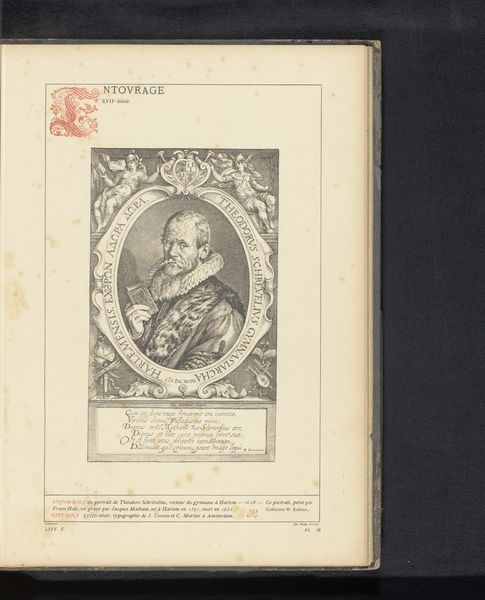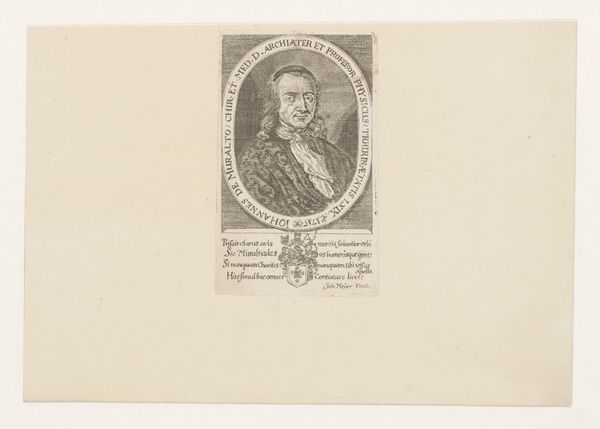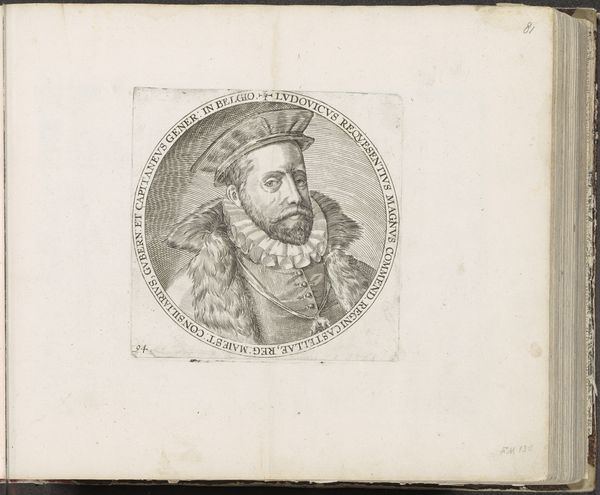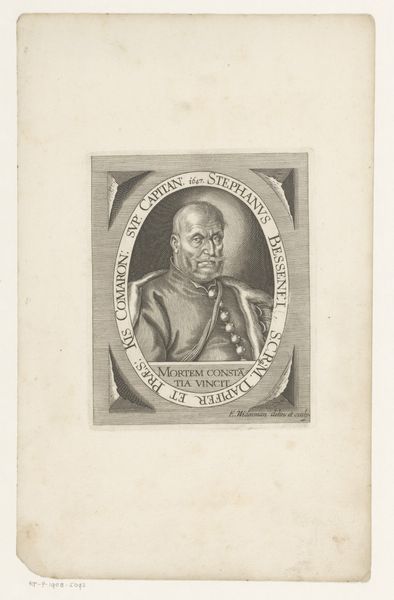
print, engraving
#
portrait
# print
#
11_renaissance
#
coloured pencil
#
history-painting
#
engraving
Dimensions: height 170 mm, width 170 mm
Copyright: Rijks Museum: Open Domain
Curator: Looking at this engraving, the formality almost chokes the subject. Do you get that sense, too? Editor: Yes, absolutely! It's quite severe, even oppressive. Who is it that we're looking at? Curator: We're observing "Portret van de hertog van Anjou," or Portrait of the Duke of Anjou. This print was completed around 1604 by Frans Hogenberg and is now held here at the Rijksmuseum. It is made using an engraving technique. Editor: The tight framing and stark lines give it a powerful feel, like peering through a keyhole at a member of court. I'm curious about the circle. It seems like such a forceful choice, like he’s trapped within his rank. Curator: Well, the circle acts almost like a coin or seal, meant to evoke authority and permanence. You’ll notice, too, that the inscription around the perimeter names him Franciscus Valesius Dux Alazonis, detailing his lineage as the brother of King Henry III of France. Editor: It's interesting how they literally inscribe the subject’s identity. It feels very intentional. You know, the Duke himself seems a bit...disinterested? He looks past us. What do you read from that gaze? Curator: He's playing a role. It's as if he's saying, "I am who I am, deal with it." The symbolism embedded in Renaissance portraiture was everything. Power and divine right, conveyed through clothing, inscription and, yes, even a carefully cultivated expression. It reminds me that an image is designed as cultural shorthand. Editor: It does communicate so much. Consider the lace ruff. I can almost hear it rustling; so stiff and deliberate. I'm struck by how printmaking circulated power, even vanity, far beyond painted portraits viewed by few. Curator: Precisely, the engraving made it available, disseminating the Duke’s image and, therefore, his power more widely. Thank you for illuminating the less obvious aspects of it. Editor: Thank you for taking me on this journey, seeing familiar stories retold again by subtle, material traces of history.
Comments
No comments
Be the first to comment and join the conversation on the ultimate creative platform.
